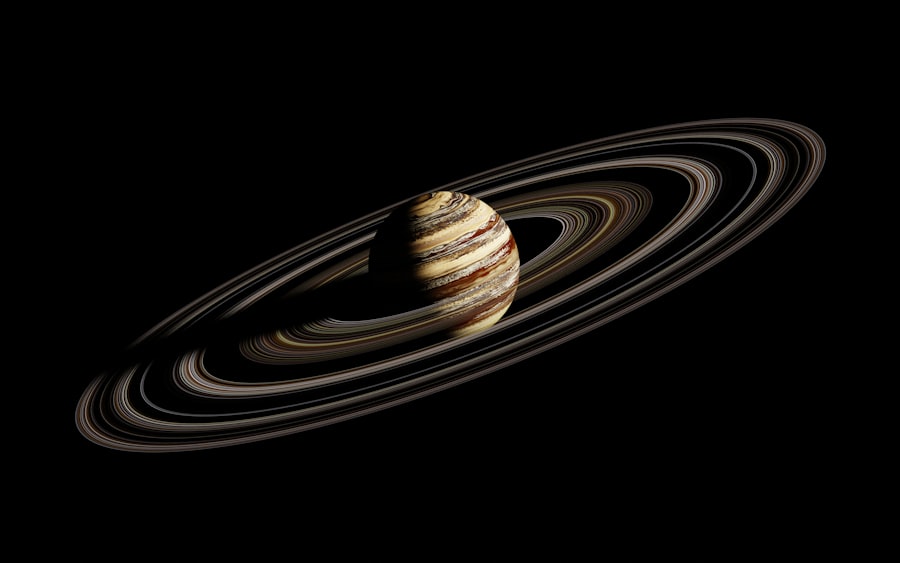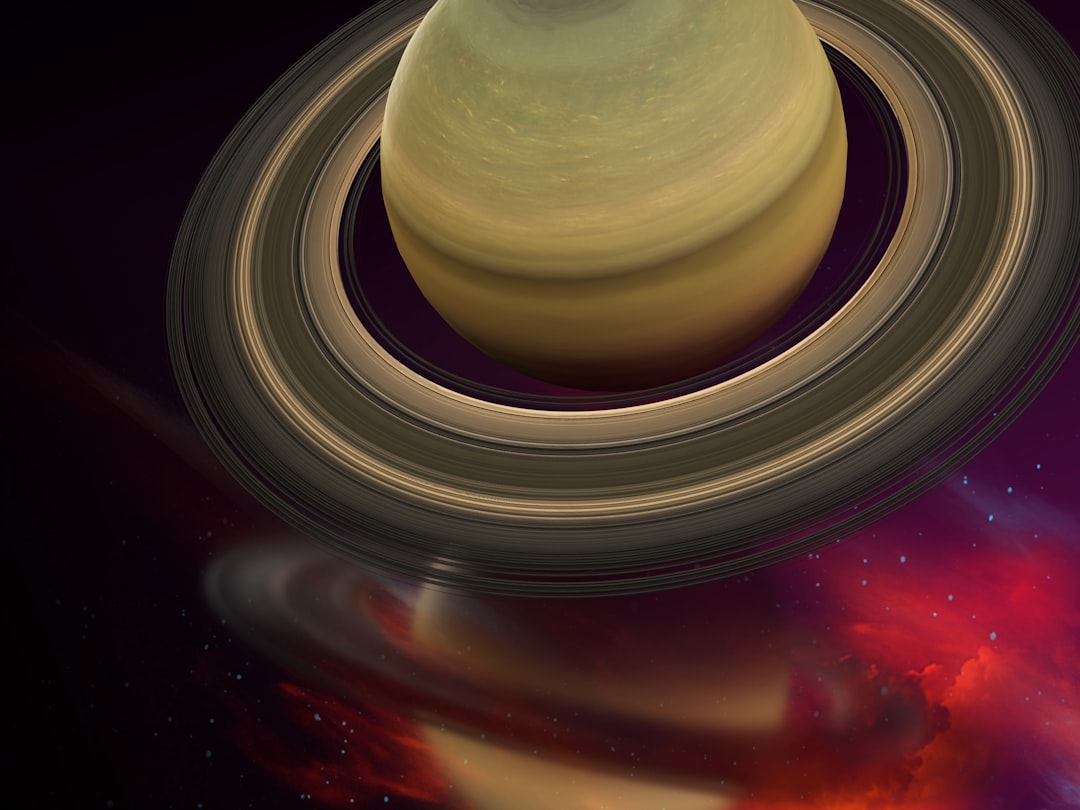The Cassini spacecraft, a marvel of modern engineering and scientific ambition, embarked on its journey to Saturn in 1997, marking the beginning of a groundbreaking mission that would last over two decades. Launched from Cape Canaveral, Florida, Cassini was a collaborative effort between NASA, the European Space Agency (ESA), and the Italian Space Agency (ASI). Its primary objective was to study Saturn, its rings, and its myriad moons, providing insights into the planet’s complex atmosphere and unique characteristics.
The mission was named after Giovanni Domenico Cassini, a 17th-century astronomer who made significant contributions to the understanding of Saturn and its moons. As Cassini traveled through the vastness of space, it covered approximately 3.5 billion kilometers before entering orbit around Saturn in July 2004. The spacecraft was equipped with a suite of scientific instruments designed to capture high-resolution images, analyze atmospheric composition, and study the gravitational fields of Saturn and its moons.
Over the years, Cassini sent back a wealth of data that transformed humanity’s understanding of the Saturnian system, revealing intricate details about its rings, moons, and atmospheric phenomena. The mission not only expanded scientific knowledge but also ignited public interest in planetary exploration, showcasing the wonders of our solar system.
Key Takeaways
- Cassini’s mission to Saturn provided groundbreaking insights into the planet’s atmosphere, rings, moons, and magnetic field.
- The Grand Finale of Cassini’s mission involved a series of daring dives into Saturn’s atmosphere, providing unprecedented data and images.
- Cassini uncovered Saturn’s unique hexagonal storm at its north pole, a mysterious and mesmerizing feature of the planet.
- Surprising discoveries of water on Saturn, including water vapor in the upper atmosphere and evidence of liquid water beneath the surface, have reshaped our understanding of the planet.
- Cassini’s data has provided new insights into the dynamic and complex nature of Saturn’s rings, revealing intricate structures and processes at work.
The Grand Finale: Cassini’s Dive into Saturn’s Atmosphere
In September 2017, Cassini concluded its mission with a dramatic finale that captivated scientists and space enthusiasts alike. After more than 13 years in orbit around Saturn, the spacecraft executed a series of daring dives between the planet and its innermost ring. This phase, known as the Grand Finale, allowed Cassini to gather unprecedented data about Saturn’s atmosphere and magnetic field.
The spacecraft made 22 close passes through this uncharted territory, providing insights that had previously been unattainable. As Cassini plunged into Saturn’s atmosphere, it transmitted valuable information about the planet’s composition and dynamics. The data collected during these final orbits revealed details about the atmospheric structure, including temperature variations and wind patterns.
Scientists were particularly interested in understanding how Saturn’s atmosphere interacts with its magnetic field and how these interactions influence the planet’s weather systems. The Grand Finale not only marked a fitting end to Cassini’s mission but also opened new avenues for research into the mysteries of gas giants.
Uncovering Saturn’s Unique Hexagonal Storm

One of the most striking features observed by Cassini during its mission was Saturn’s enigmatic hexagonal storm at the planet’s north pole.
Cassini’s observations provided critical insights into the storm’s structure and dynamics, revealing that it extends deep into the atmosphere and is surrounded by powerful winds reaching speeds of up to 220 miles per hour.
The hexagon is not merely a surface phenomenon; it is a complex system that exhibits remarkable stability over time. Cassini’s data indicated that the storm is likely driven by a combination of atmospheric dynamics and thermal processes. Researchers have speculated that the hexagonal shape may result from the interplay of different wind patterns and temperature gradients within Saturn’s atmosphere.
By studying this unique storm, scientists hope to gain a deeper understanding of atmospheric phenomena not only on Saturn but also on other gas giants in our solar system and beyond.
The Surprising Discovery of Water on Saturn
| Discovery Date | Location | Method |
|---|---|---|
| July 2018 | Saturn | Analysis of data from the Cassini spacecraft |
One of the most astonishing revelations from Cassini’s mission was the discovery of water in various forms throughout Saturn’s system. While water vapor had been detected on some of Saturn’s moons, such as Enceladus and Titan, Cassini provided compelling evidence of water in the planet’s atmosphere itself. The spacecraft’s instruments detected water molecules in the upper atmosphere, suggesting that they may play a role in the planet’s weather patterns and chemical processes.
The presence of water on Enceladus was particularly significant. Cassini discovered plumes of water vapor erupting from the moon’s south pole, indicating an active subsurface ocean beneath its icy crust. This finding raised intriguing questions about the potential for life beyond Earth, as Enceladus is considered one of the most promising places to search for extraterrestrial life within our solar system.
The discovery of water on Titan further fueled interest in this moon, which possesses lakes and rivers of liquid methane and ethane on its surface. Together, these findings underscore the importance of water as a key ingredient for life and highlight the diverse environments present within Saturn’s realm.
Exploring Saturn’s Rings: New Insights from Cassini’s Data
Cassini’s exploration of Saturn’s iconic rings provided a wealth of information that reshaped our understanding of these celestial structures. The spacecraft conducted detailed observations of the rings’ composition, structure, and dynamics, revealing that they are primarily composed of ice particles ranging in size from tiny grains to massive boulders. The rings are not uniform; they exhibit intricate patterns and features that change over time due to gravitational interactions with Saturn’s moons.
One of the most significant discoveries made by Cassini was the identification of “propeller” features within the rings—small disturbances caused by moonlets embedded in the ring material. These propellers create gaps and waves in the rings, offering insights into their formation and evolution. Additionally, Cassini’s observations revealed that some ring particles are coated with organic materials, hinting at complex chemical processes occurring within this icy environment.
The data collected by Cassini has not only enhanced our understanding of Saturn’s rings but has also provided valuable analogs for studying ring systems around other planets.
The Magnetic Mystery of Saturn’s Moon, Enceladus

Enceladus, one of Saturn’s most intriguing moons, captured significant attention during Cassini’s mission due to its unique magnetic properties and geological activity. The spacecraft discovered that Enceladus possesses a subsurface ocean beneath its icy shell, which is likely in contact with a rocky seafloor. This interaction may create conditions conducive to hydrothermal activity, raising exciting possibilities for astrobiology.
Cassini’s magnetometer detected variations in Enceladus’ magnetic field that suggested the presence of electrically conductive materials beneath its surface. These findings indicated that salty water is likely present in the moon’s ocean, further supporting theories about its potential habitability. The geysers erupting from Enceladus’ south pole not only provided direct evidence of this subsurface ocean but also allowed scientists to sample its composition.
Analyzing these plumes revealed organic molecules and other chemicals essential for life as we know it. Enceladus stands out as one of the most promising candidates for future exploration in the search for extraterrestrial life.
Cassini’s Revelation of Titan’s Earth-like Features
Titan, Saturn’s largest moon, emerged as another focal point during Cassini’s mission due to its striking resemblance to Earth in certain aspects. With a thick atmosphere rich in nitrogen and methane lakes on its surface, Titan presents a unique environment that has fascinated scientists since its discovery. Cassini’s observations revealed complex weather patterns on Titan, including seasonal changes that affect its surface features.
The spacecraft captured stunning images of Titan’s lakes and rivers filled with liquid methane and ethane, showcasing a hydrological cycle unlike anything seen on Earth. This alien landscape raises intriguing questions about prebiotic chemistry and potential life forms adapted to such extreme conditions. Furthermore, Cassini’s radar data indicated that Titan’s surface is shaped by erosion processes similar to those on Earth, suggesting dynamic geological activity beneath its icy crust.
These revelations have positioned Titan as a prime candidate for future exploration missions aimed at understanding planetary processes and the potential for life beyond our planet.
Unveiling the Dynamic Weather Patterns on Saturn
Cassini’s long-term observations provided an unprecedented view into Saturn’s dynamic weather patterns, revealing a complex interplay between atmospheric phenomena and seasonal changes. The spacecraft documented massive storms that can develop rapidly and persist for months or even years. These storms are characterized by their immense size and intensity, often rivaling entire continents on Earth.
One notable event was a colossal storm that erupted in 2010 and lasted for several months, producing lightning flashes thousands of times more powerful than those on Earth. Cassini’s instruments captured detailed images and data during this storm, allowing scientists to study its formation and evolution in real-time. Additionally, seasonal changes on Saturn lead to variations in temperature and wind patterns across different latitudes, influencing cloud formation and storm activity.
By analyzing these dynamic weather systems, researchers hope to gain insights into atmospheric processes applicable not only to gas giants but also to exoplanets with similar characteristics.
The Enigma of Saturn’s Giant Storms
Saturn’s giant storms have long intrigued scientists due to their scale and complexity. These massive weather systems can span thousands of kilometers and exhibit intricate structures that evolve over time. Cassini’s observations provided valuable data on these storms’ formation mechanisms and their relationship with seasonal changes on the planet.
The spacecraft documented several significant storms during its mission, including one that appeared unexpectedly in 2011 near Saturn’s equator. This storm grew rapidly and produced bright white clouds visible from great distances. Researchers believe that these storms may be driven by deep atmospheric processes involving heat transfer from within Saturn’s interior.
Understanding these giant storms is crucial for unraveling the mysteries of gas giant atmospheres and their potential similarities with other celestial bodies.
Cassini’s Findings on Saturn’s Mysterious Auroras
Cassini also made significant contributions to understanding Saturn’s auroras—spectacular light displays caused by charged particles interacting with the planet’s magnetic field. Unlike Earth’s auroras, which are primarily influenced by solar wind interactions, Saturn’s auroras exhibit unique characteristics tied to its rotation and magnetic field dynamics. The spacecraft observed auroras at both poles of Saturn, revealing intricate patterns that change with time and seasonality.
Cassini’s instruments detected variations in brightness and color associated with different energy levels of charged particles colliding with Saturn’s atmosphere. These findings have provided insights into how magnetic fields shape auroral activity on gas giants and have implications for understanding similar phenomena on exoplanets.
The Legacy of Cassini: Future Missions to Saturn
As Cassini’s mission came to an end in September 2017, it left behind a rich legacy that continues to inspire future exploration endeavors within our solar system. The wealth of data collected during its journey has laid the groundwork for upcoming missions aimed at further unraveling the mysteries surrounding Saturn and its moons. NASA’s upcoming Dragonfly mission is set to explore Titan in greater detail by sending a rotorcraft lander capable of flying between various locations on the moon’s surface.
This innovative approach will allow scientists to investigate Titan’s diverse environments directly while searching for signs of prebiotic chemistry or even life itself. Additionally, future missions may focus on Enceladus’ subsurface ocean or delve deeper into understanding Saturn’s atmospheric dynamics based on insights gained from Cassini’s findings.
Its discoveries have not only reshaped our understanding but have also ignited curiosity about what lies beyond our home planet—encouraging humanity to continue exploring the wonders of our solar system.
The Cassini mission has provided a wealth of information about Saturn and its moons, but some intriguing data remains classified. For those interested in exploring more about the secrets and findings of the Cassini mission, you can read a related article on this topic at XFile Findings. This resource delves into various aspects of the mission and discusses the implications of the undisclosed data.
FAQs
What is the Cassini mission?
The Cassini mission was a collaboration between NASA, the European Space Agency, and the Italian Space Agency to study the planet Saturn and its moons.
What kind of data did the Cassini mission collect?
The Cassini mission collected a wide range of data, including images, spectra, and measurements of magnetic fields, radio emissions, and particles in Saturn’s magnetosphere and its moons.
Why is the data from the Cassini mission considered secret?
The data from the Cassini mission is not inherently secret, but some of it may be restricted due to proprietary or national security concerns, or to protect the privacy of individuals involved in the mission.
How is the data from the Cassini mission being used by scientists?
The data from the Cassini mission is being used by scientists to study the composition, geology, and dynamics of Saturn and its moons, as well as to better understand the processes that shape planetary bodies in our solar system.
Is there any public access to the data from the Cassini mission?
Yes, much of the data from the Cassini mission is publicly available through NASA’s Planetary Data System, which provides access to a wide range of planetary science data for research and educational purposes.
